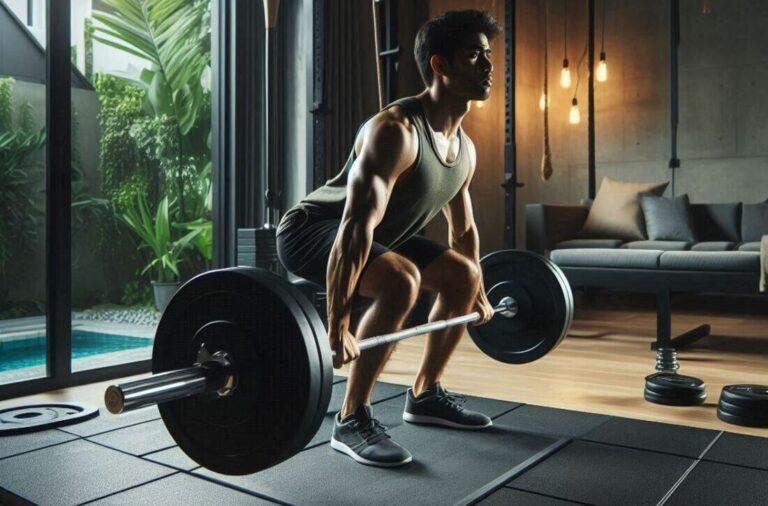You are setting up your dream home gym, pumped to transform your fitness routine.
But as you envision intense workouts, a nagging question arises – what about comfort underfoot?
Here’s where EVA foam tiles enter the scene, offering a compelling blend of comfort, affordability, and practicality for your home gym flooring.
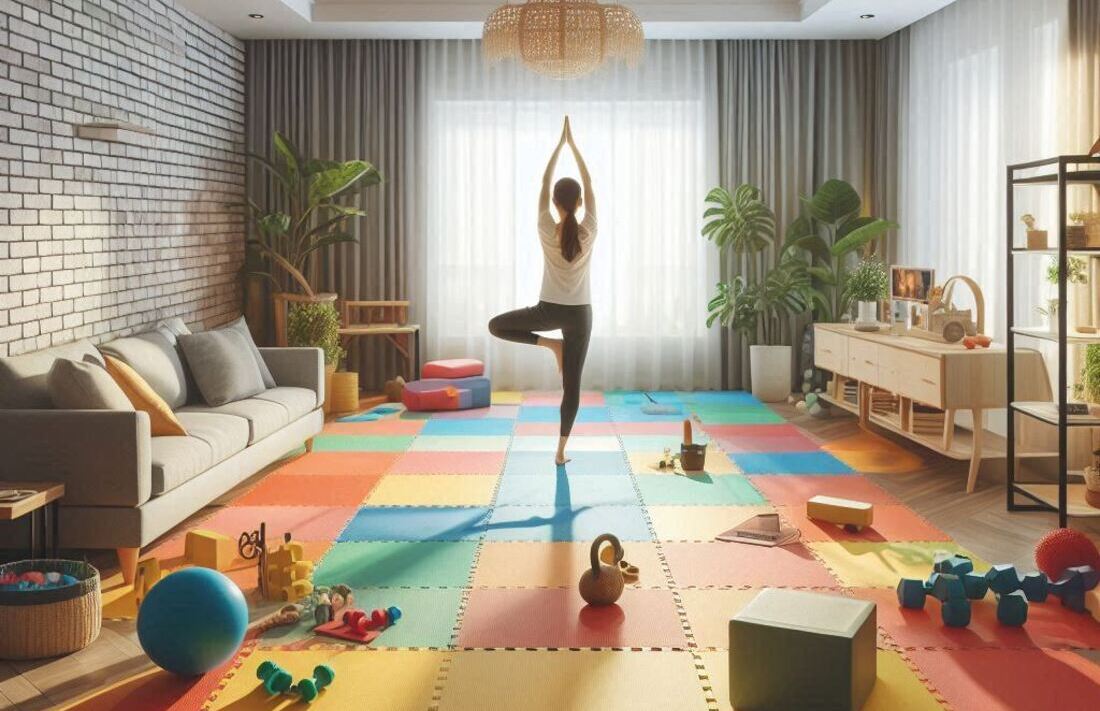
But are foam tiles all sunshine and rainbows?
Let’s delve deeper into the world of EVA foam floor tiles, exploring their benefits, drawbacks, different types, and everything you need to know to decide if they’re the perfect fit for your home gym.
Why Consider Foam Tiles for Your Home Gym?
EVA (ethylene-vinyl acetate) foam tiles have become a popular choice for home gyms, and for good reason.
Here are some key advantages to consider:
- Comfort: Say goodbye to cold, hard concrete! Foam tiles provide a cushioned surface that’s gentle on your joints during exercises like lunges, planks, or yoga poses.
- Impact Absorption: Foam tiles offer some level of impact absorption, minimizing the jarring impact on your joints from jumping exercises or weightlifting (though not ideal for heavy weights).
- Affordability: Compared to other gym flooring options like rubber, foam tiles are a budget-friendly choice. This makes them a good option for cost-conscious gym enthusiasts.
- Ease of Installation: Most foam tiles are lightweight and feature an interlocking puzzle design. This allows for easy DIY installation, saving you time and potentially installation costs.
- Versatility: Foam tiles come in a variety of colors, patterns, and even textures. You can create a custom gym floor that matches your aesthetic preferences.
- Noise Reduction: Similar to rubber flooring, foam tiles help dampen noise from workouts, keeping your gym sessions considerate of neighbors or other household members.
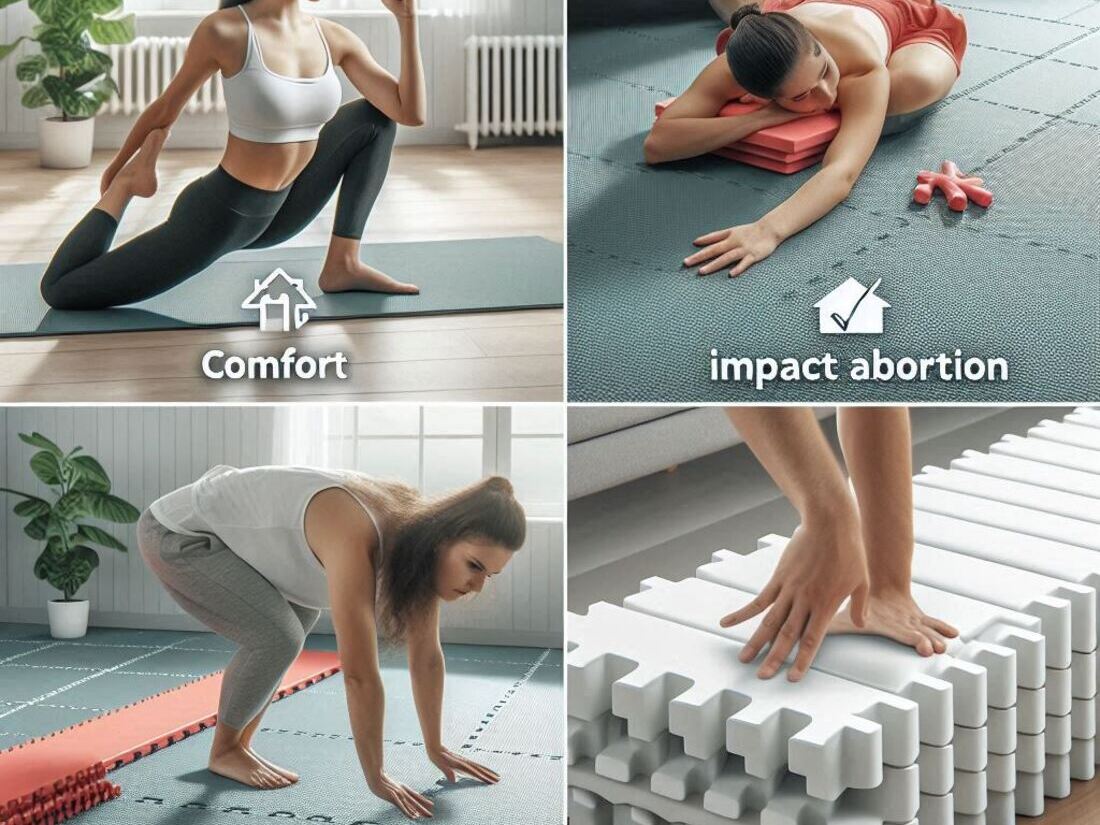
Key Takeaways on Foam Tile Benefits:
- Comfortable surface for exercises like lunges, planks, and yoga.
- Provides some impact absorption for jumping and light weightlifting.
- Affordable option for budget-conscious gym builders.
- Easy DIY installation saves time and money.
- Versatile with a variety of colors, patterns, and textures.
- Reduces noise from workouts.
Now that you’re intrigued by the potential of foam tiles, let’s explore the different types available:
Types of EVA Foam Floor Tiles
(Note: Affiliate Links)
- Standard EVA Foam Tiles: These are the most common type, offering basic comfort and affordability. They come in various thicknesses (typically ¼ inch to ½ inch) and a range of colors.
- Textured EVA Foam Tiles: These tiles feature a textured surface, providing improved slip resistance, especially beneficial for sweaty workouts.
- Interlocking Exercise Mats: These larger interlocking mats offer a thicker and more cushioned surface, ideal for high-impact exercises or floor workouts.
- Puzzle Exercise Mats: These interlocking mats feature puzzle-like edges for even easier installation and a more customized layout for your gym space.
Table 1: Comparison of Common EVA Foam Tile Types
| Type | Pros | Cons | Ideal Use |
|---|---|---|---|
| Standard EVA Foam Tiles | Affordable, various colors | Thinner, less impact absorption | Low-impact workouts, yoga, stretching |
| Textured EVA Foam Tiles | Improved slip resistance | May be slightly more expensive | General gym use, cardio, bodyweight exercises |
| Interlocking Exercise Mats | Thicker, more cushioned | Can be heavier and bulkier | High-impact exercises, weightlifting (lighter weights) |
| Puzzle Exercise Mats | Easy installation, customizable layout | Similar thickness options as standard tiles | General gym use, functional training |
Note: This table is a general guide, and specific products within each type may have varying features.
Important Considerations Before Buying Foam Tiles
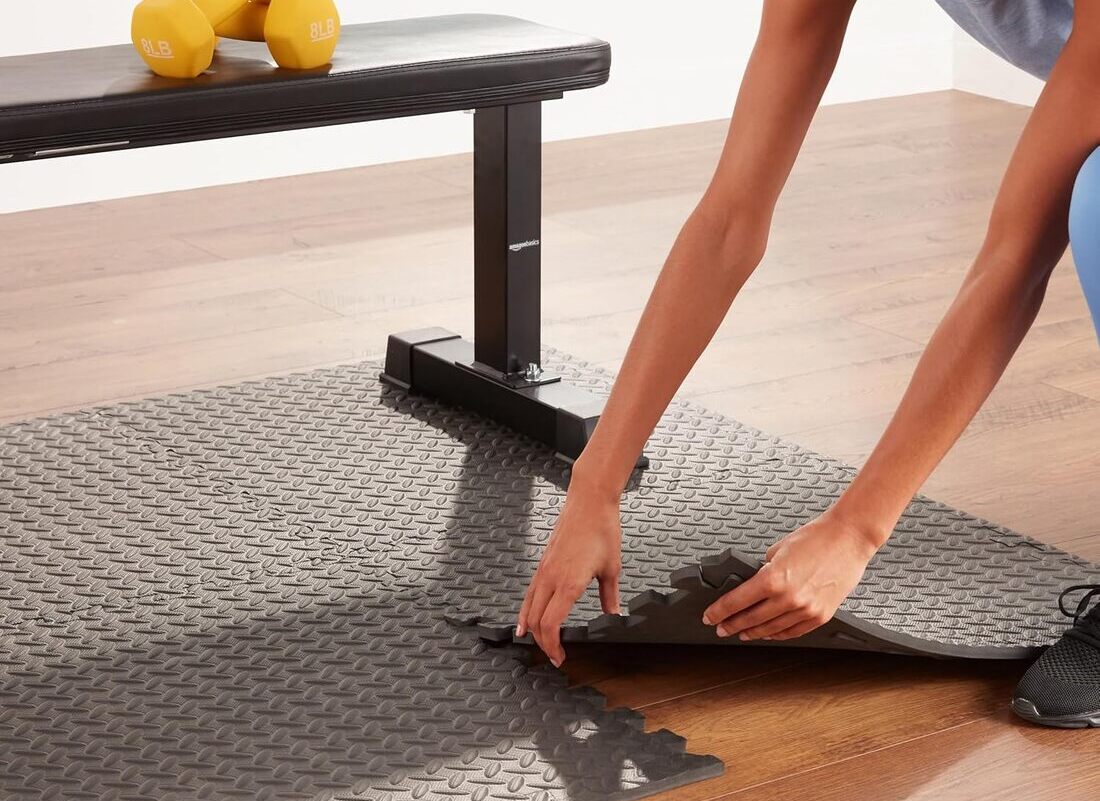
While foam tiles offer numerous benefits, here are some factors to keep in mind before making your purchase:
- Thickness: Consider the type of workouts you’ll be doing. Thicker tiles (½ inch or above) offer better comfort and impact absorption.
- Durability: Foam tiles can wear down over time, especially with heavy use. Consider the density and quality of the foam for lasting performance.
- Interlocking Mechanism: Ensure the interlocking mechanism is secure and easy to use. Loosely connected tiles can create tripping hazards.
- Off-Gassing: Some foam tiles may emit a slight odor initially. Look for low-odor or certified non-toxic options for a healthier workout environment.
FAQs: Frequently Asked Questions About EVA Foam Floor Tiles
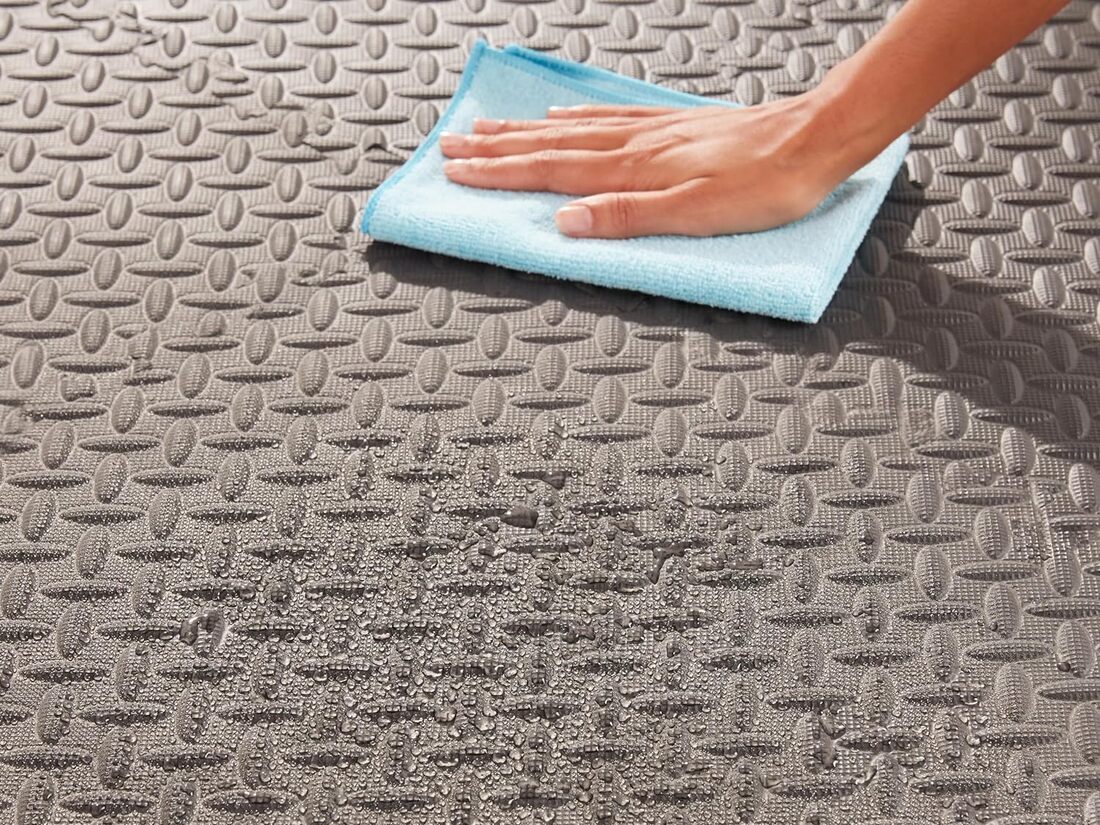
Are foam tiles easy to clean?
Absolutely! Foam tiles are generally easy to clean. Regular sweeping to remove dust and debris is sufficient for most situations. For deeper cleaning, occasional mopping with a mild detergent solution is recommended. Avoid harsh chemicals or abrasive cleaners that can damage the foam.
Do foam tiles provide enough support for heavy weights?
While foam tiles offer some impact absorption, they may not be the ideal choice for heavy weightlifting. For exercises with heavy weights (think barbells with significant weight plates), rubber flooring offers superior support and durability.
Are foam tiles slippery?
Standard foam tiles can be somewhat slippery, especially when wet. Opt for textured foam tiles for improved slip resistance. Additionally, using a yoga mat or workout towel during sweaty exercises can further enhance traction.
How long do foam tiles typically last?
The lifespan of foam tiles depends on factors like thickness, quality, and usage intensity. Standard thickness tiles used moderately can last for a few years. Higher quality and thicker tiles used with care can last even longer.
Where can I buy foam tiles?
EVA foam tiles are widely available from various retailers. You can find them at sporting goods stores, home improvement stores, online marketplaces like Amazon, and fitness equipment stores. When shopping online, prioritize reputable sellers with clear return policies and positive customer reviews.
Conclusion: Foam Tiles – A Comfort-Focused Choice for Your Home Gym?
EVA foam tiles offer a compelling combination of affordability, comfort, and ease of use, making them a popular choice for home gym flooring.
They’re ideal for low-impact workouts, yoga, bodyweight exercises, and functional training.
However, for heavy weightlifting or high-impact activities, other options like rubber flooring might be a better fit due to superior durability and support.
Consider your workout style, budget, and desired level of comfort when making your decision. Remember, high-quality foam tiles with a secure interlocking mechanism and low odor emissions can create a comfortable and functional foundation for your home gym.
Bonus Tip
To extend the life of your foam tiles, invest in floor mats for specific high-traffic areas or exercises that involve heavy weights.
This can help minimize wear and tear on the tiles themselves.
Happy training!


